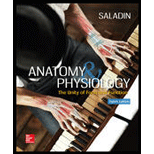
Concept explainers
To discuss:
The nutritional value of a protein depends on its amino acid composition and the eight essential amino acids and the difference between complete and incomplete proteins. The meaning of net protein utilization and its difference in the plant and animal origins and ecological advantages of plant origin.
Introduction:
Nutrition is the basis of all life activities, and it is taken care of by the process called
Want to see the full answer?
Check out a sample textbook solution
Chapter 26 Solutions
Anatomy & Physiology: The Unity of Form and Function
- All minerals and most vitaminsarrow_forwardThe Impact of Dietary Patterns and Nutrition in Nonalcoholic Fatty Liver Disease.arrow_forwardWhy iron is essential; how the stomach converts dietary iron to a usable form; and theroles of gastroferritin, transferrin, and ferritin in iron metabolismarrow_forward
- Be able to write a reflectiontion paper of at least 50 words ,assessing the role of carbohydrates in Nutrition and oral health especially its role in the formation of dental caries.arrow_forwardReplaceable and essential amino acids, what is the reason. The main sources of essential amino acids. "Replacement" of amino acids at different ages of the person, what is the reason.arrow_forwardExplanation of each (carbohydrate, fibre, fat, vitamins, minerals, and water)arrow_forward
